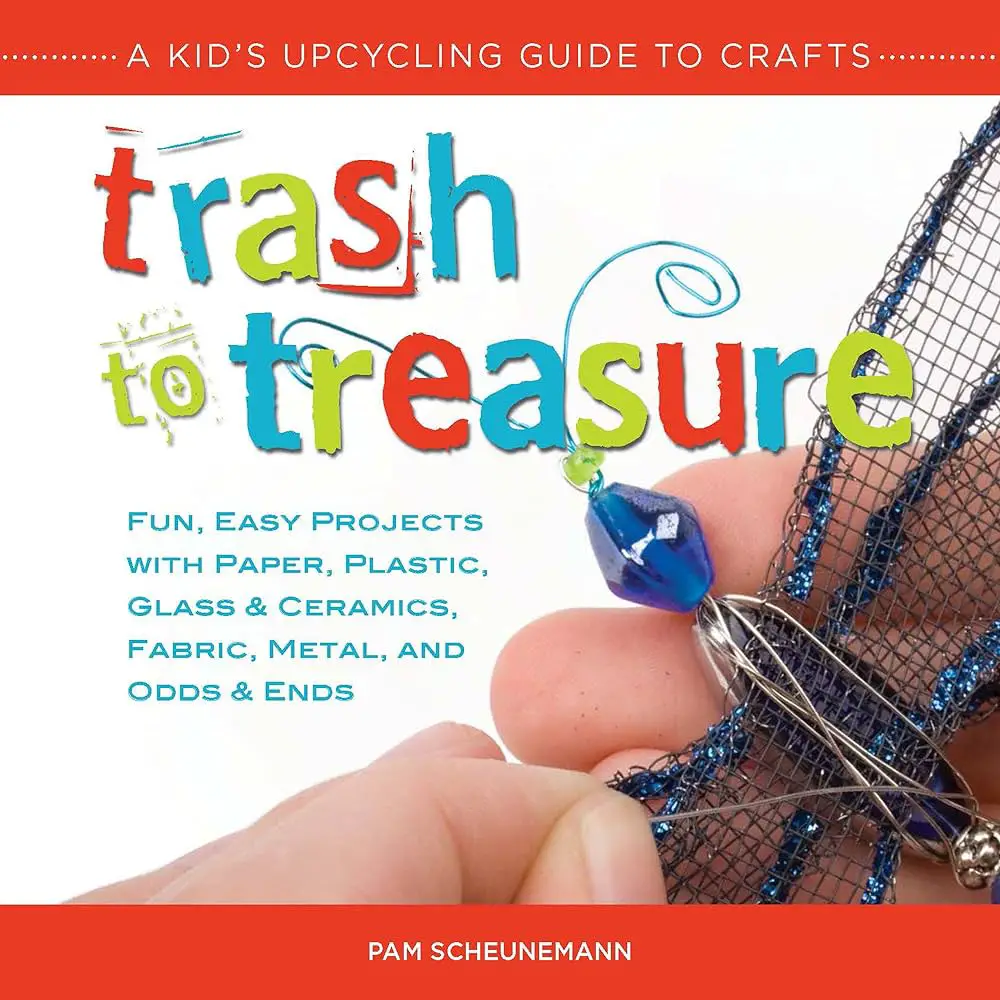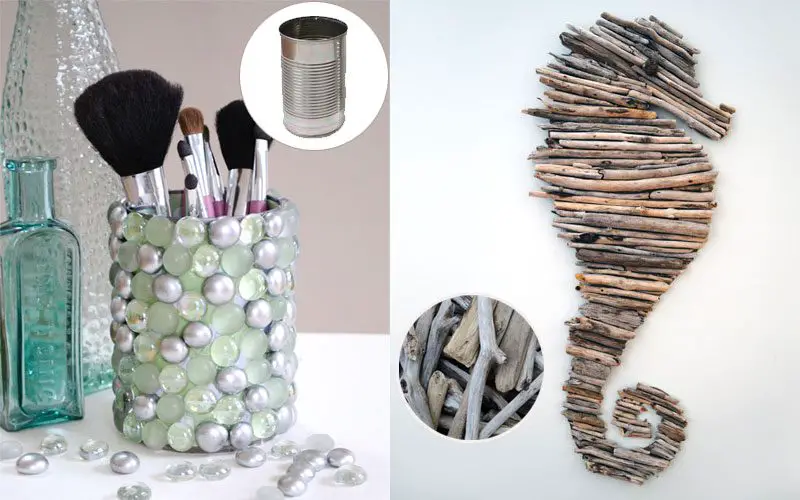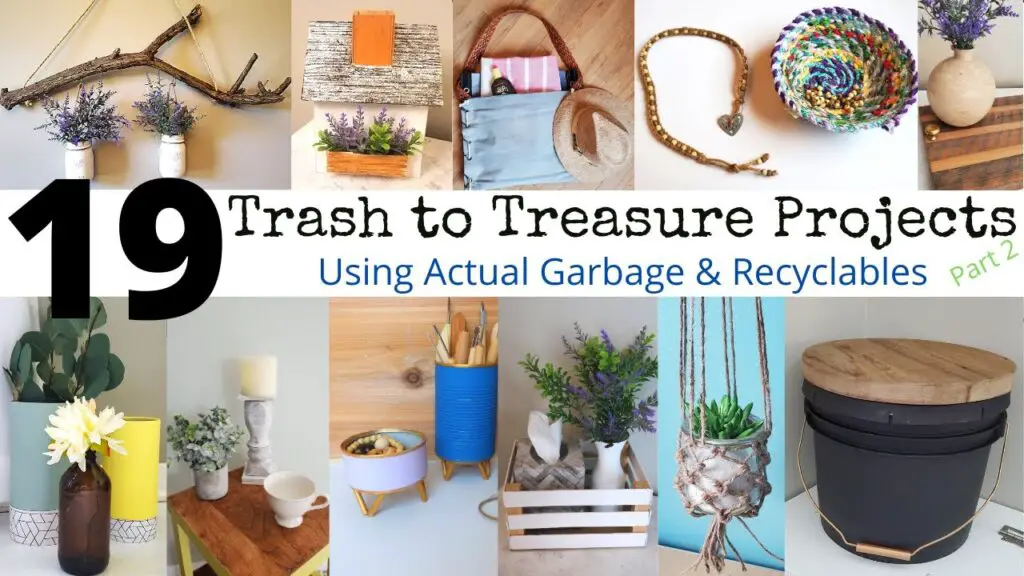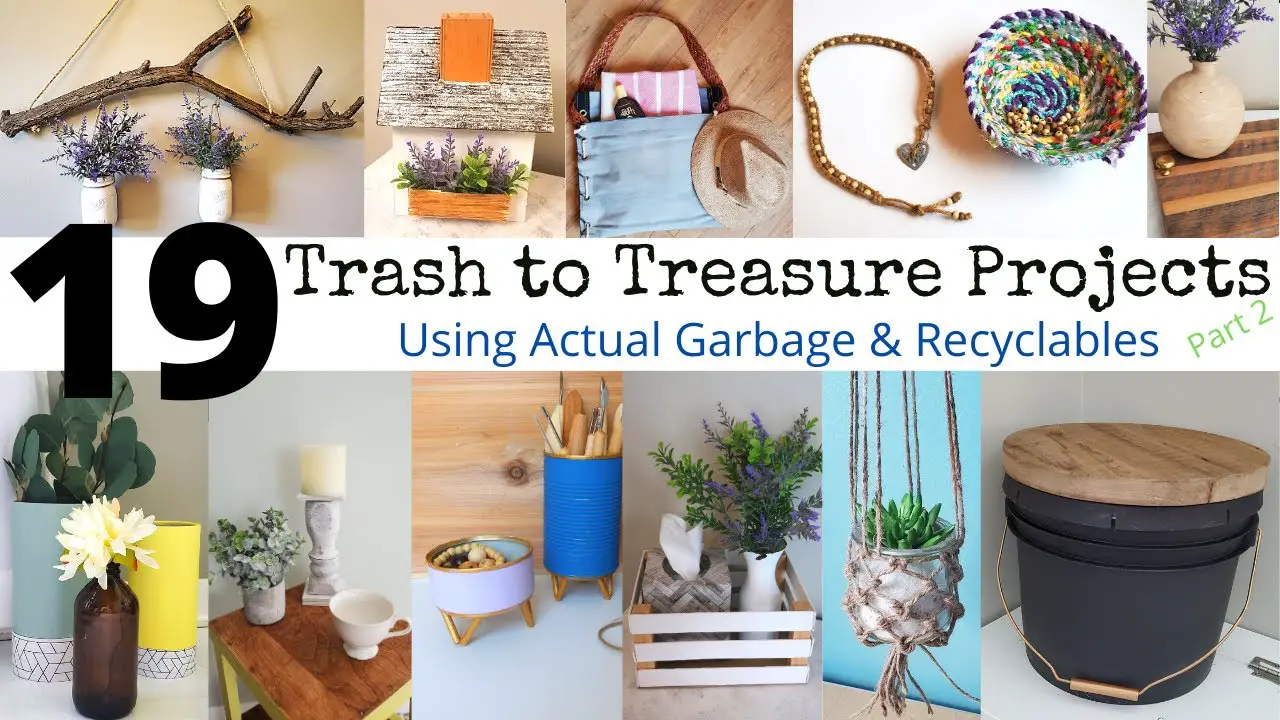You have probably heard the saying, “One person’s trash is another person’s treasure.” Well, in the world of upcycling, that saying couldn’t be more true. Upcycling is the art of taking discarded materials and turning them into something beautiful and useful. It’s not just recycling, it’s taking recycling to a whole new level. With a little creativity and a lot of vision, upcycling is changing the way we look at waste and giving old items a new lease on life. Get ready to be inspired by the incredible potential that can be found in what others might see as mere trash.

What is Upcycling
Definition of Upcycling
Upcycling is the process of transforming old or discarded materials into something new and valuable. Rather than throwing away these items, they are repurposed and given a new lease on life. The essence of upcycling is taking something that might otherwise be considered waste and turning it into a useful or aesthetically pleasing product.
Difference between Upcycling and Recycling
While both upcycling and recycling involve reusing materials, there is a distinct difference between the two. Recycling breaks down materials into their raw form to create new products, whereas upcycling takes existing materials and transforms them into a completely different item without breaking them down. Upcycling focuses on creative reuse, while recycling is primarily concerned with reducing waste and conserving resources.
Benefits of Upcycling
There are numerous benefits to embracing the practice of upcycling. Firstly, upcycling helps to reduce waste and minimize the strain on landfills. By repurposing materials, we can significantly reduce the amount of waste that ends up in our environment. Additionally, upcycling promotes creativity and innovation, as it requires thinking outside the box to find new ways of using old items. It also allows individuals to save money by finding alternative uses for items they already have. Moreover, upcycling contributes to the preservation of natural resources, as it reduces the need for new materials to be produced. By upcycling, we can minimize our carbon footprint and contribute to a more sustainable future.
The History of Upcycling
Origins of Upcycling
The concept of upcycling can be traced back centuries, with individuals finding ways to repurpose materials long before it became a popular term. In times of scarcity, people would creatively reuse items to meet their needs. However, the modern notion of upcycling as an artistic and sustainable practice gained prominence in the 1990s.
Famous Upcycling Movements in History
Throughout history, there have been noteworthy upcycling movements that have left a lasting impact. One such movement is the Arts and Crafts movement of the late 19th and early 20th centuries. Led by influential figures such as William Morris, this movement emphasized the importance of craftsmanship and the use of quality materials. Artisans during this time often upcycled materials to create unique, handcrafted pieces.
Modern Day Upcycling Influencers
In recent years, upcycling has gained significant traction in the design and creative industries. Several influential individuals have emerged as advocates for upcycling, inspiring others to embrace the practice. One notable influencer is Sarah Turner, an artist known for transforming discarded plastic bottles into stunning light fixtures. Another influencer is Max McMurdo, a designer who repurposes various materials, such as old boat sails and oil drums, to create furniture and home decor items. These modern-day upcycling influencers demonstrate the beauty and potential of transforming trash into treasure.
Popular Upcycling Materials
Plastic
Plastic is one of the most ubiquitous materials in our society, and it poses a significant environmental challenge. However, through upcycling, plastic can be given a new purpose and kept out of the landfill. Plastic bottles can be transformed into planters, lamps, or even outdoor furniture. Discarded plastic bags can be woven or fused together to create durable and unique accessories or home decor items. The versatility of plastic makes it a popular choice for upcycling projects.
Glass
Glass is another material that can be effectively upcycled. Empty glass jars and bottles can be repurposed as stylish vases or storage containers. With a little creativity, glass bottles can be transformed into unique drinking glasses or candle holders. Upcycling glass not only gives these items a new life but also reduces the demand for new glass production, which requires significant amounts of energy and resources.
Paper and Cardboard
Paper and cardboard are commonly found in households and offices, and they can be easily upcycled into various useful items. Old newspapers can be transformed into papier-mâché sculptures or woven into baskets. Cardboard boxes can be turned into organizers or shelving units. By repurposing these materials, you can give them a new purpose while reducing the need for new paper production.
Textiles
Textiles, including clothing and fabric scraps, are prime candidates for upcycling projects. Old t-shirts can be transformed into reusable shopping bags or woven into rugs. Fabric scraps can be stitched together to create patchwork clothing or quilts. By upcycling textiles, you can extend their lifespan, reduce textile waste, and create one-of-a-kind pieces.
Wood
Wood is a versatile material that lends itself well to upcycling. Discarded pallets can be dismantled and repurposed into furniture or garden planters. Old wooden doors can be transformed into unique headboards or used to build shelves and tables. By upcycling wood, you can add a touch of warmth and character to your home while reducing the demand for new timber.
Metal
Metal objects, such as cans, old keys, and scrap metal, can find new life through upcycling. Cans can be transformed into pencil holders or decorative lanterns. Old keys can become unique jewelry or incorporated into artwork. Scrap metal can be used to create sculptures or repurposed into functional items such as coat hooks. The durability of metal makes it an ideal material for upcycling projects.
Tools and Techniques for Upcycling
Basic Upcycling Tools
To engage in upcycling projects, you don’t need a vast array of specialized tools. Often, basic tools found in most households are sufficient for many upcycling projects. Some essential tools for upcycling include a screwdriver, hammer, pliers, sandpaper, and a hot glue gun. These tools allow you to disassemble, reshape, and create new items from your upcycled materials.
Creative Techniques for Upcycling
Upcycling is all about creativity and finding innovative ways to repurpose materials. There are several techniques you can employ to transform your unwanted items into something new and exciting. These techniques include painting, decoupage, sewing, welding, and woodworking. By combining different techniques, you can elevate your upcycling projects and create truly unique pieces.
Sustainable Practices in Upcycling
Sustainability is a core principle of upcycling. When engaging in upcycling projects, it’s important to adopt sustainable practices. That means prioritizing the use of natural, non-toxic materials when creating or enhancing your upcycled items. Whenever possible, choose water-based paints and adhesives instead of those containing harmful chemicals. Additionally, make efforts to source your materials locally or from secondhand sources to reduce your environmental impact.

Upcycling Projects for the Home
DIY Furniture
One popular category of upcycling projects is furniture. Old chairs can be given a fresh look with new upholstery or a coat of paint. Wooden pallets can be transformed into unique coffee tables or bookshelves. By upcycling furniture, you can personalize your living space while diverting these items from the landfill.
Home Decor
Upcycling can breathe new life into tired home decor items. Empty wine bottles can be transformed into rustic flower vases. Vintage tins can be turned into stylish storage containers. By upcycling home decor, you can add a touch of uniqueness to your space while reducing waste.
Lighting
Lighting fixtures offer endless opportunities for upcycling. Old mason jars can be transformed into pendant lights. Wine bottle bottoms can be repurposed into unique lampshades. By upcycling lighting, you can create ambient and eco-friendly illumination in your home.
Storage Solutions
Upcycling offers a myriad of inventive storage solutions. Baskets made from repurposed fabric or plastic packaging can serve as stylish and eco-friendly storage options. Wooden crates can be stacked to create modular shelving units or bookcases. Upcycled storage solutions help you organize your space while minimizing clutter.
Garden and Outdoor Upcycling
The garden is another area where upcycling can shine. Old tires can be turned into colorful planters. Unused wooden pallets can be transformed into vertical gardens or outdoor seating. By upcycling in the garden, you can create a sustainable and visually appealing outdoor space.
Fashion and Accessories Upcycling
Repurposing Clothing
Upcycling clothing allows you to refresh your wardrobe while reducing textile waste. Old jeans can be transformed into stylish denim shorts or skirts. Oversized shirts can be altered and embellished to create unique tops. By repurposing clothing, you can showcase your personal style while reducing your environmental impact.
Jewelry
Jewelry is another area where upcycling can shine. Old keys can be turned into statement necklaces. Bottle caps can become colorful earrings or bracelets. The possibilities are endless when it comes to upcycling jewelry. By incorporating upcycled jewelry into your accessories collection, you can make a fashion statement while promoting sustainability.
Shoes and Accessories
Even footwear and accessories can undergo upcycling transformations. Old sneakers can be painted and customized to create unique and personalized kicks. Torn or outdated handbags can be given new life with fabric or leather repairs. By upcycling shoes and accessories, you can stay on-trend while reducing waste.

Upcycling in Art and Design
Upcycled Sculptures
Artists have embraced upcycling as a medium for creating unique sculptures. By repurposing various materials, such as scrap metal, discarded electronics, or found objects, artists can create thought-provoking and visually stunning sculptures. Upcycled sculptures challenge traditional notions of art materials and highlight the potential for creativity in everyday items.
Mixed Media Art
Mixed media art often incorporates elements of upcycling. Artists combine various materials, such as found objects, fabric scraps, or discarded papers, to create multi-dimensional artwork. Upcycling adds depth and texture to mixed media pieces, allowing artists to incorporate materials with rich histories and stories.
Fashion Design
The world of fashion has embraced upcycling as designers explore sustainable alternatives to traditional manufacturing processes. Designers repurpose fabric scraps, vintage garments, or discarded materials to create new and innovative fashion pieces. Upcycling in fashion design not only reduces waste but also fosters a more conscious and ethical approach to the industry.
Interior Design
Upcycling is increasingly being integrated into interior design projects, allowing individuals to create unique and sustainable spaces. Furniture, lighting fixtures, and decorative items are often upcycled to add character and reduce waste. By incorporating upcycled elements into interior design, you can create a visually captivating environment while reducing your ecological footprint.
Upcycling as a Sustainable Business
Upcycling Entrepreneurs
Upcycling has become a flourishing niche within the entrepreneurial landscape. Many individuals have turned their passion for upcycling into successful businesses. From creating upcycled fashion lines to designing furniture made from reclaimed materials, these entrepreneurs showcase the commercial viability of upcycling. By investing in upcycled products, consumers can support these businesses and make a positive impact on the environment.
Challenges and Opportunities
While upcycling offers numerous benefits, it also presents challenges. Sourcing suitable materials for upcycling projects can be a hurdle, as finding specific items or materials may require time and effort. Additionally, upcycled products often face market competition from cheaper, non-sustainable alternatives. However, these challenges also present opportunities for innovation and creative problem-solving.
Social and Environmental Impacts
Embracing upcycling as a sustainable business practice can have significant social and environmental impacts. By diverting materials from landfills, upcycling reduces the strain on waste management systems and minimizes pollution. It also creates employment opportunities within local communities, as upcycling often requires manual labor and craftsmanship. The social and environmental benefits of upcycling contribute to building a more sustainable and resilient society.

Education and DIY Upcycling
Benefits of Teaching Upcycling
Integrating upcycling into educational curricula offers numerous benefits for students. Teaching upcycling fosters creativity, problem-solving skills, and resourcefulness. It encourages students to think critically about waste and consumption patterns. Moreover, educating students about upcycling instills a sense of environmental responsibility and empowers them to make conscious choices.
Educational Programs and Workshops
Educational programs and workshops dedicated to upcycling have emerged in various settings, ranging from schools and community centers to art studios and museums. These programs provide individuals of all ages with the skills and knowledge needed to engage in upcycling projects. By participating in such programs, individuals can develop their creative abilities and deepen their understanding of sustainable practices.
Tips for Starting Upcycling Projects at Home
Embarking on upcycling projects at home can be an exciting and rewarding experience. To get started, begin by identifying items you no longer use or have considered discarding. Once you have a collection of potential materials, research different upcycling techniques and ideas that align with your interests and skills. Start small with simple projects, and gradually challenge yourself to tackle more complex upcycling endeavors. Remember to have fun and embrace the creative possibilities that upcycling offers.
Upcycling and the Circular Economy
The Concept of the Circular Economy
The concept of the circular economy is centered around minimizing waste and maximizing resource efficiency. It aims to create a system where materials and resources are used, reused, and repurposed in a continuous loop, rather than being discarded after a single use. The circular economy promotes sustainability, economic growth, and reduced environmental impact.
How Upcycling Fits into the Circular Economy
Upcycling aligns perfectly with the principles of the circular economy. By transforming waste materials into new products, upcycling extends the lifespan of these materials and prevents them from ending up in landfills. It helps close the loop by reintroducing materials into the economy, reducing the need for new resource extraction and production. Upcycling is a tangible way for individuals and businesses to actively participate in the circular economy and contribute to a more sustainable future.
Collaborations and Partnerships
To fully leverage the potential of upcycling within the circular economy, collaborations and partnerships are essential. Businesses, governments, and individuals can work together to create networks that facilitate the sourcing, dissemination, and upcycling of materials. Collaboration between designers, manufacturers, and consumers can lead to the development of innovative upcycled products and systems. By fostering partnerships, we can maximize the impact of upcycling on the circular economy and drive positive change.
Upcycling is not only a creative and fulfilling practice but also a significant contributor to building a more sustainable world. By transforming trash into treasure and embracing the philosophy of upcycling, we can reduce waste, conserve resources, and create a more circular and sustainable economy. So why not embark on your own upcycling journey and discover the limitless potential of turning old into new?

